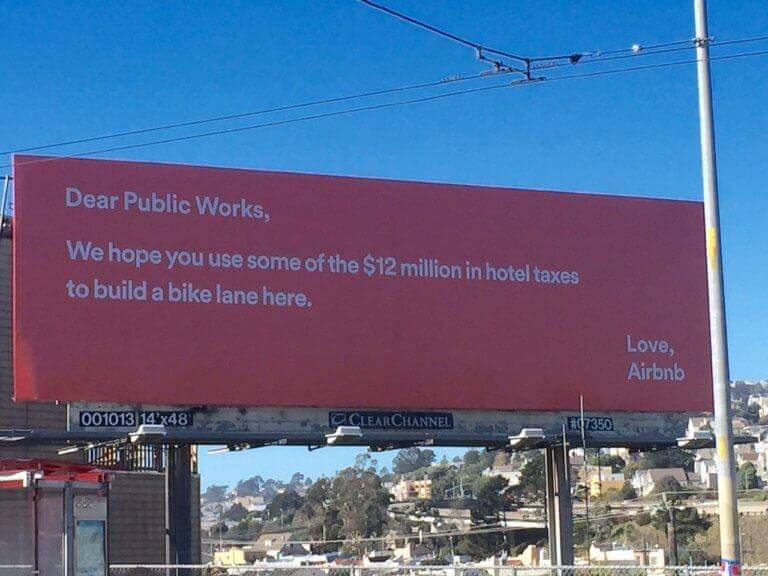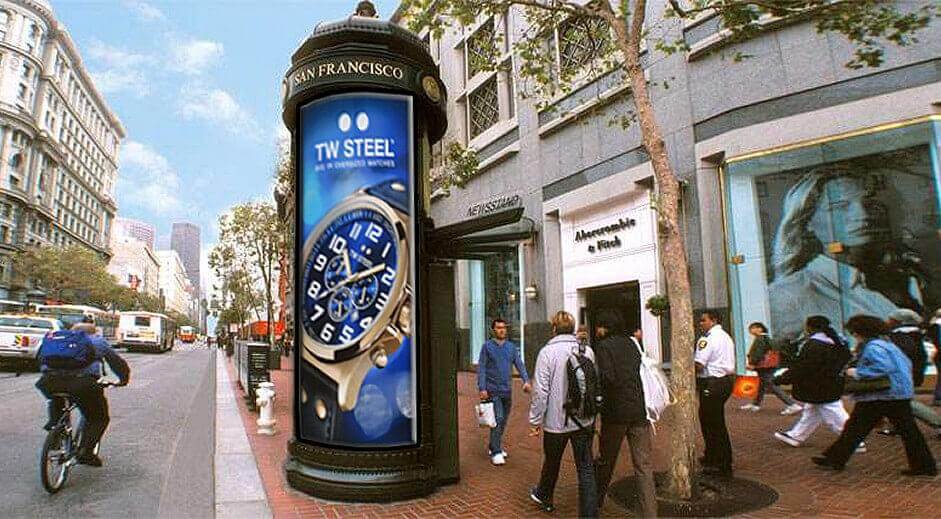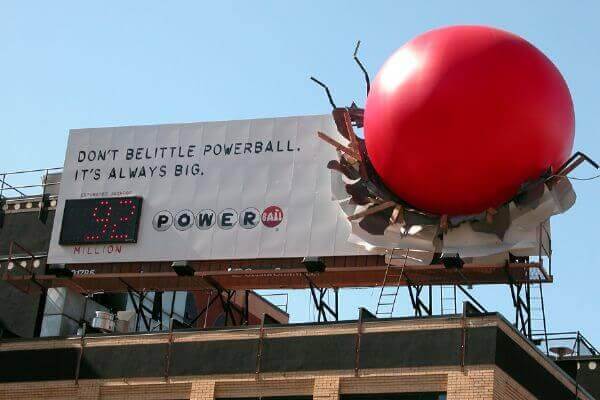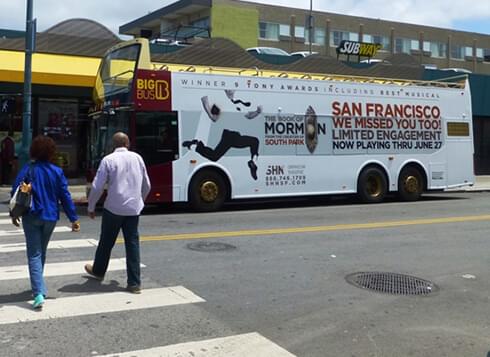
Overview
Among the Golden Gate Bridge, cable cars, a wide selection of eatery, and biking culture, San Francisco uses billboard advertising to speak to their people and their tourists. In 2018, San Francisco Travel saw an average of 26.28 million visitors in the city, which was an increase of 2.6 percent from the previous year. Total tourism spending in 2018 was almost $9.4 billion, which was up by 3.8 percent from 2017. The increase in tourists, and the increase in their spending habits, leads to more developed advertising opportunities; especially, with billboards.
Outdoor advertising in San Francisco is a great way to reach people because it’s a city where tourism doesn’t die down, and weather is generally enjoyable. The population in San Francisco is approximately 885,000 and it’s the 3rd most densely populated city in the United States. It’s the hilly city, perfect for outdoor activities and exercise, that’s on the tip of the peninsula surrounded by the Pacific Ocean and San Francisco Bay. The Bay area consists of nine counties: Alameda, Contra Costa, Marin, Napa, San Francisco, San Mateo, Santa Clara, Solano, and Sonoma. Each country has their own advertising displays.
Tourist attractions like AT&T Park, Alcatraz Island, and the San Francisco Zoo draw thousands of consumers to San Francisco every year and allow for very effective advertising opportunities. Billboards near these attractions will yield high traffic and exposure, potentially growing your business. Let’s discuss kiosk advertising in San Francisco, the costs of renting billboards, the areas in the Bay Area that are most prominent for billboard advertising, the way millennials can experience this, and the transit system advertising effect.
Kiosk Advertising
San Francisco has approximately 120 advertising kiosks which cannot be missed. Located in the heart of high-density business areas, entertainment districts, and shopping centers, these advertising kiosks reach out to people happening to walk by. In San Francisco, many people travel by foot so these kiosks are great advertising experiences. Areas including Union Square, the Financial District, and Fisherman’s Wharf include kiosks that have the potential to reach about 7 million people in a biweekly period of time. These large, 24-hour backlit, 17-foot kiosks hover over populated sectors, providing advertisers with maximum message exposure. The kiosks are the most striking outdoor media platforms to reach pedestrians and vehicular traffic in the Bay Area.
Costs and Impact of Billboards in Bay Area
The current billboard boom took off in 2011, where San Francisco saw a rising opportunity to distribute more billboard advertising to a growing tourist segment. The more money put into showing the lifestyle of San Francisco, the more money tourists will dish out to be a part of it all. While there’s a vanity element at work, and some startup employees show up at their billboards to take pictures, the main reasons for advertising are more practical. Along the Bay Area’s 101 Freeway, there’s a captive audience stuck in traffic and promotional billboards can help recruit employees and increase business.
Speaking of traffic and highway advertising, a company called Performance Horizon Group marketed itself by purchasing several weeks of billboard space along the Bay Area’s 101 Freeway. This company has respected clients such as Google and Hewlett-Packard, and saw that the 101 Freeway, between San Francisco Airport and the San Jose Airport, has gotten the reputation of the worst commute in all of the Bay Area. A statistic shows that the Metropolitan Transit Commission discovered that total commuters lost about 6550 hours per day due to traffic along the 101 in 2014. Performance Horizon Group used this number to their advantage, and gave commuters something to look at on their tiring treks.
Now, they spent a lot on their billboards because they were digital and rotated between eight companies. Each one of their ads showed for 8 seconds every 64 seconds. For that 8 second spot, their billboard cost was $16,000. Had they shown their ads for the full 64 seconds, they would’ve spent $128,000 in a four-week block.
Other companies rent billboards in the margins of $14,000 to $40,000 a month, depending on the size and location. 14 feet high and 50 feet wide billboards are popular but cost significantly more than smaller sizes. OUTFRONT Media owns about 40 billboards along the 101 Freeway, and has reported that sales has more than doubled since 2011 when they erected them in 2014. The firm was on route to rake in about $6 million from tech companies, partly due to the impactful billboard advertising.
Bay Areas for Advertising and Millennial Impact
From Fisherman’s Wharf to Union Square, from Golden Gate Park to Chinatown, from Oakland to San Jose, the San Francisco metro area covers a wide range of different locals and audiences, especially among the wake of millennials. It’s best to take into consideration the way millennials are impacted by billboards in their area codes, and how they, specifically, can be targeted as buyers in an increasing digital age.
Mission District holds the largest population of millennials in San Francisco, with over 30,501, making up 41 percent of the total district population. 27, 613 millennials also reside in Russian Hill, which is another neighborhood that is lit up by nightlife, close proximity to downtown, fine restaurants, and office headquarters. The Castro District is #9 on the list of the top 20 national hotspots, and the population of millennials in this LGBTQ neighborhood has increased by 37.4 percent between 2011 and 2016.
The older-than-20 demographic of San Francisco earns a median of near $60,000, which is about double the national average of the millennial age group. In San Francisco, nearly 74.5 percent of millennials are employed, which is more than high compared to the national 65 percent of millennial employment. These millennials can afford to purchase and, with billboard advertisements displayed in their areas, they’re definitely on track to be long-lasting consumers.
SFMTA Ads
The unit of public transportation in San Francisco is called the San Francisco Municipal Transportation Agency (SFMTA) and it allows ads to market to the daily commuter in an abundance of trendy areas. The SFMTA transports around 700,000 passengers per day, making outdoor advertising a powerful platform to communicate with many groups of people. The exclusive advertising partner of SFMTA is Intersection, which powers advertising on their buses, rail media, and station dominations.
SFMTA advertising involves pasting on MUNI buses, light rail vehicles, cable cars, and historic trolleys. The total weekly impressions are around 187 million, because their transit system is so expansive. On the street, the SFMTA is responsible for advertising garage dominations which refurbishes unused garage space creating wonderful new advertising.
In conclusion, it’s important to remember that San Francisco houses some of the world’s most influential billboard messages due to its booming millennial culture paying attention, its primary tourist destinations, the many Bay Areas on board, giving a new meaning to kiosks, and its SFMTA efforts.
Though the hills may be too high, there’s no shortage of impactful billboard advertising in San Francisco.







